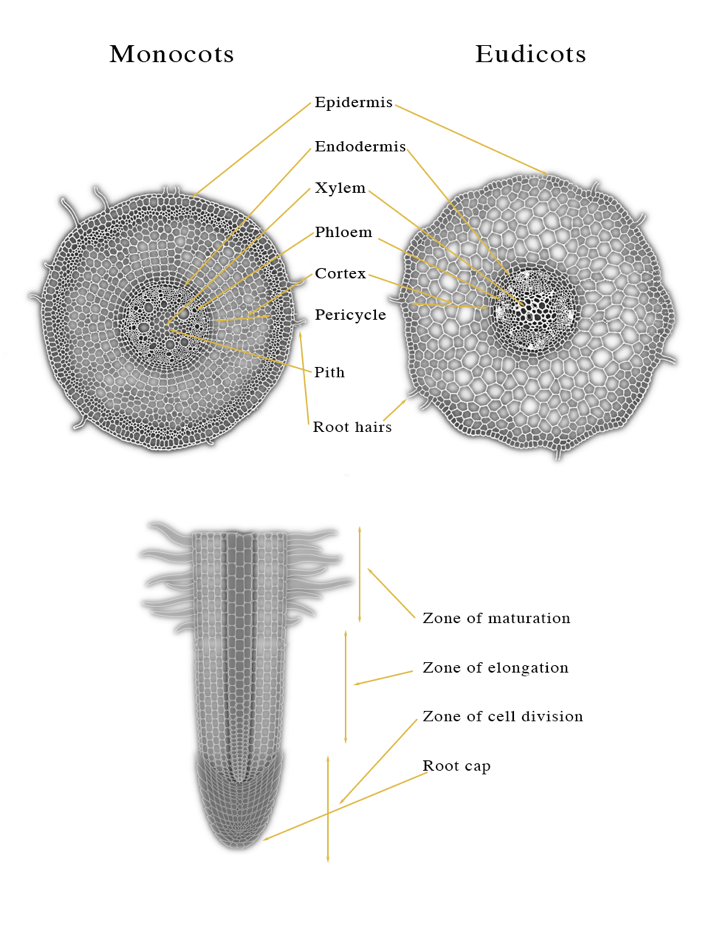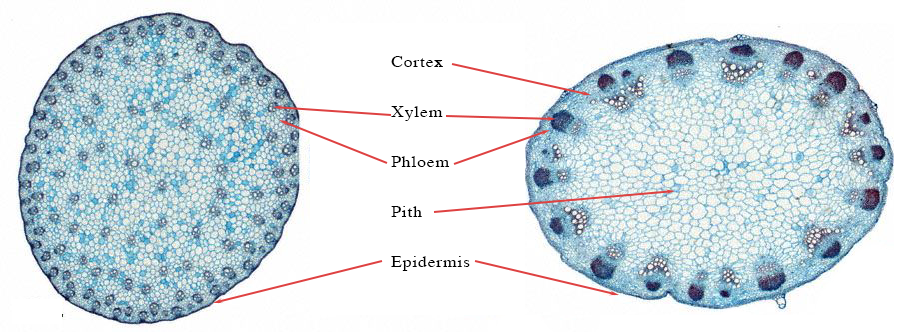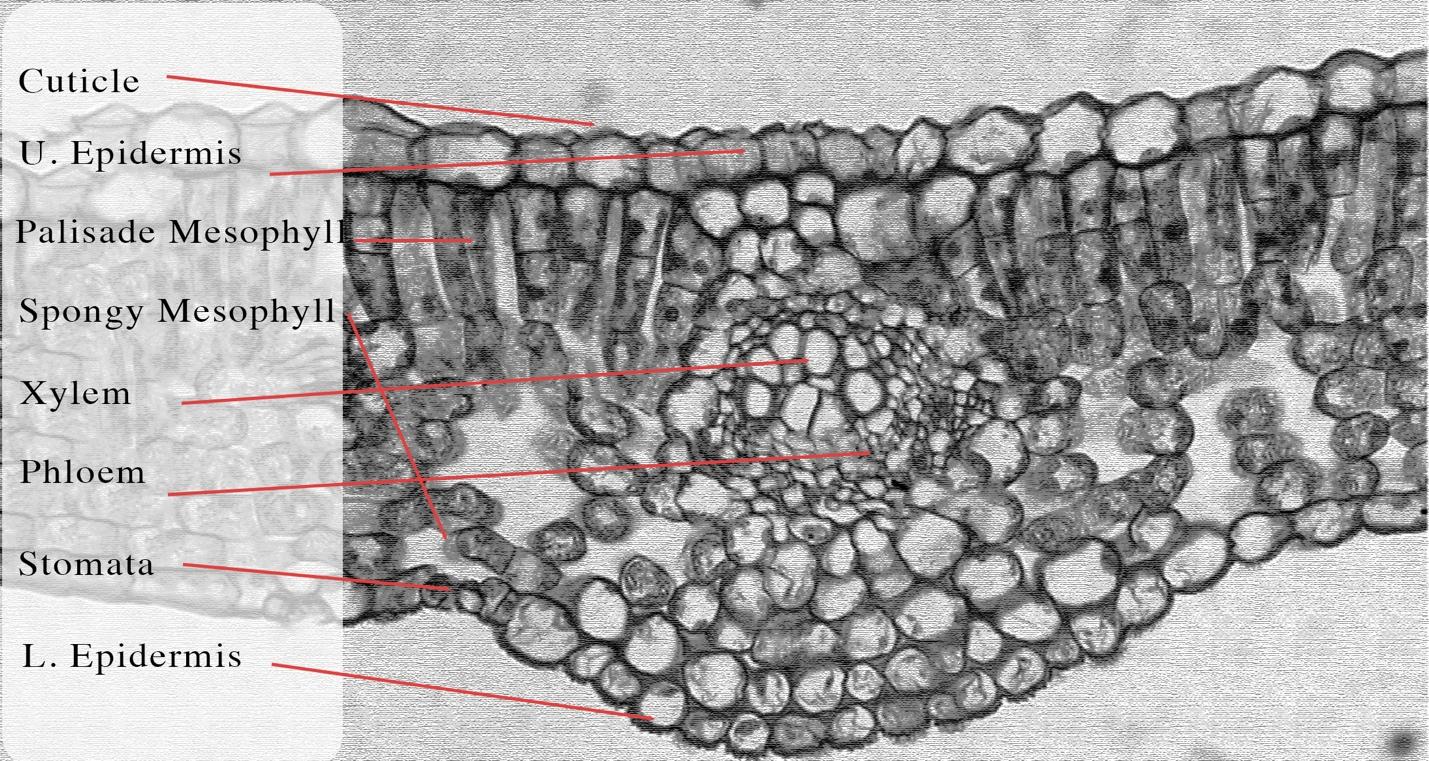The shoot system of flowering plants consists of leaves, stems, and bud structures, as well as flowers and fruit.
The root system has mechanical and conductive functions. The mechanical role of the roots is to create a stable position of the plant on the surface. The conductive function is responsible for absorbing water and minerals from the soil using the roots.
Some examples of monocotyledonous and dicotyledonous plants are shown in the table below:

The root cap protects the sensitive zone of stem cell presence for root growth.
Indeed, the Xylem and Phloem in dicotyledonous and monocotyledonous plants are arranged somewhat differently. In dicotyledonous plants, the Phloem is separated by the Vascular Cambium from the Xylem, which is located in the center of the root. In contrast, monocotyledonous plants have no vascular cambium, and so the Phloem and Xylem are adjacent in the root.
In dicotyledonous plants, the Phloem tends to be closer to the root walls than the Xylem, which traditionally occupies the center of the structure.
The scattered arrangement of the vascular bundles of monocotyledonous plants is explained by the absence of Cambium and the presence of only primary tissues within the bundle. Thus, such a structure precludes the possibility of secondary growth in thickness, which is why monocotyledonous plants are generally herbaceous.
Monocotyledonous (left) and dicotyledonous (right):

